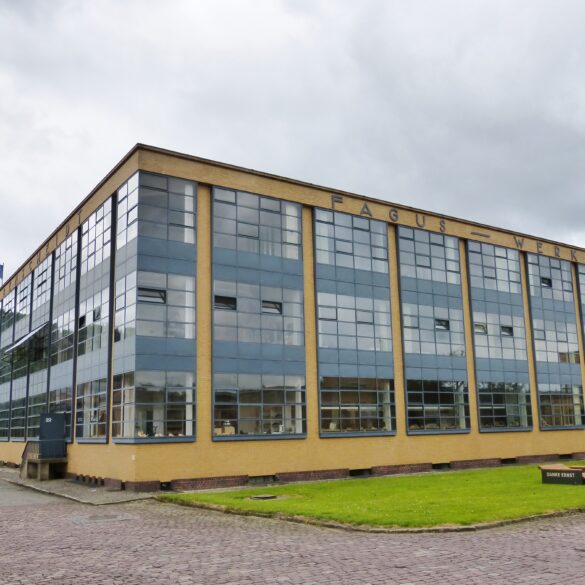Hildesheim is a city in Northern Germany that is home to a UNESCO site called St. Mary’s Cathedral and St. Michael’s Church. I’m not quite sure why UNESCO lumps sites together like that as they are several blocks apart. In any case, we visited both St. Mary’s and St. Michael’s (or at least we attempted to) as well as numerous other city sights during a weekend visit.
The market square in Hildesheim is one of the nicest I’ve seen.
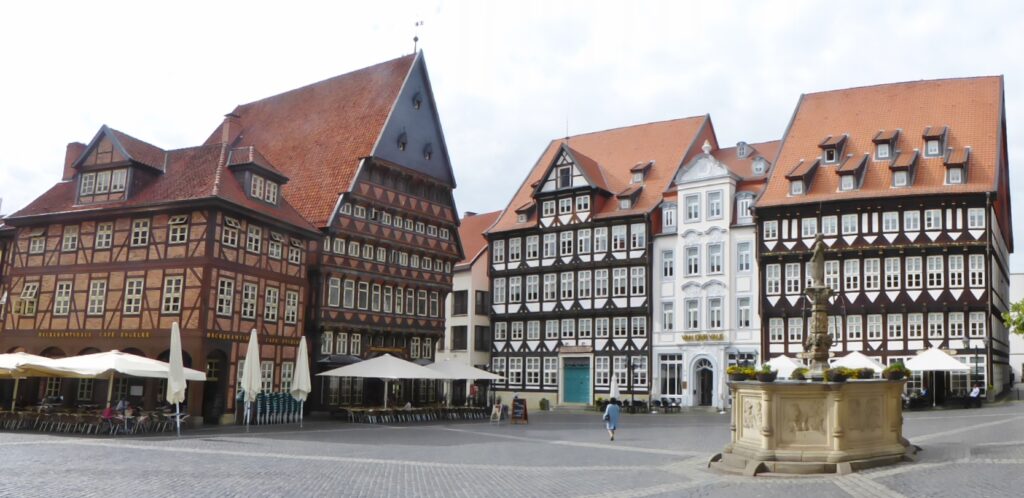
Unfortunately about 90% of that part of the city was destroyed by bombs during World War II. The market square and other buildings were reconstructed according to original plans, some as recently as the year 2010.
The town hall seen here is one of the few original buildings left in the market square.

It was built in the year 1268.
Our first stop after the market square was St. Michael’s Church, half of the UNESCO site mentioned earlier.
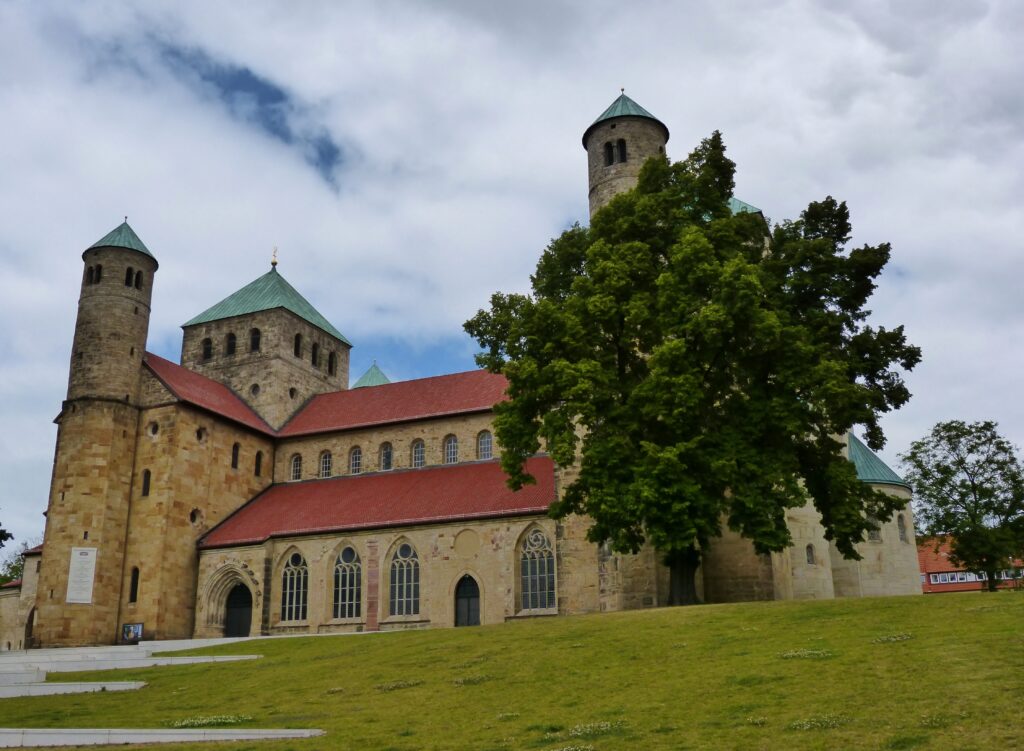
It was originally built between 1022 and 1032 but was destroyed in 1945 during the war. It was rebuilt from 1946 to 1960.
One of the most stunning features of the church is its painted wooden ceiling.

It dates from around 1230. Before the 1945 bombing, the ceiling was removed from the church and moved to another town. It was placed back after reconstruction. The panels on the ceiling show the genealogy of Jesus.
Our next stop was the Magdalena Gardens.

The gardens are home to over 1,500 roses.
Next we made our way St. Mary’s Cathedral, the other half the city’s UNESCO site. Unfortunately this is what we saw when we got there.
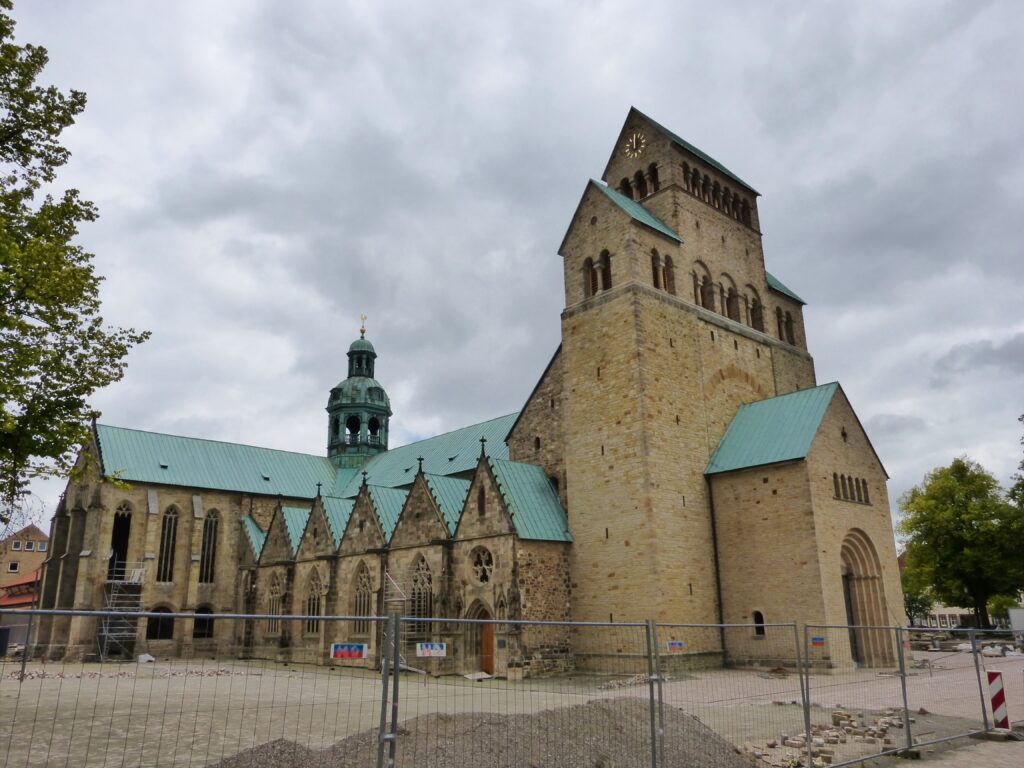
I had read that the church was being renovated, but I didn’t know until we got there that the interior is completely closed to visitors. That was quite a disappointment.
Luckily one of the most famous sites at the cathedral was still open to visitors.
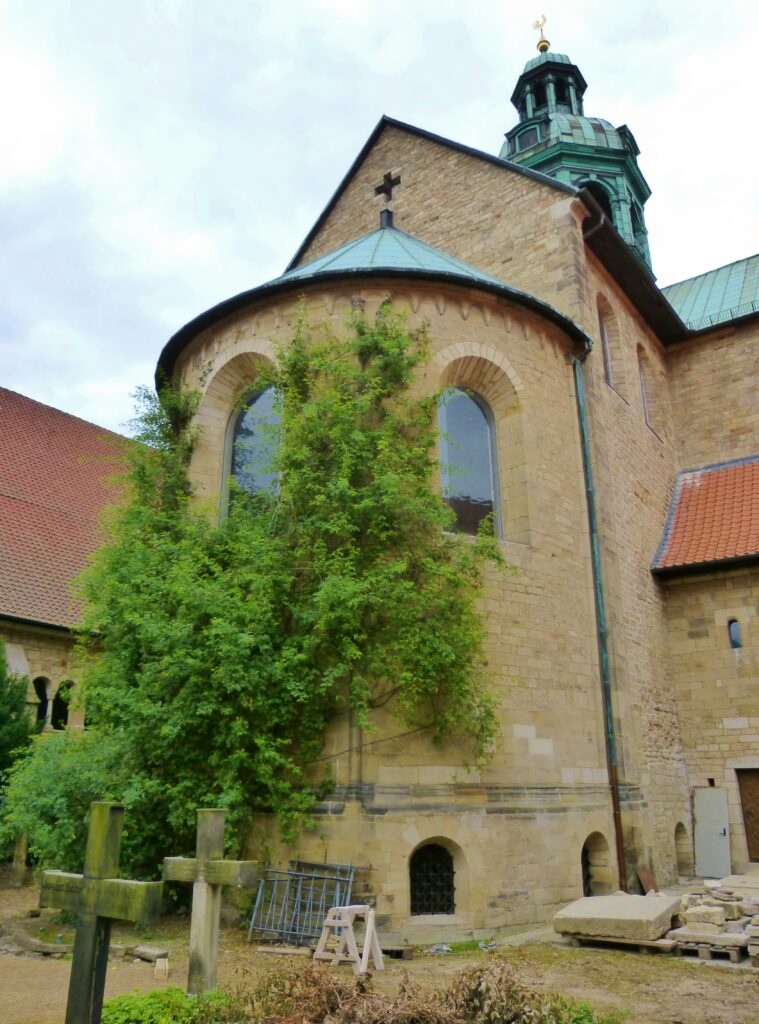
The leaves you see on the outside of that tower are actually part of a 1,000-year old rose bush. You have to pay a separate admission fee to see it, which we obviously paid, but again disappointingly there were no roses blooming. Apparently they normally bloom only for a couple of weeks at the end of May/beginning of June, so we missed it having visited the 3rd week in June.
The cathedral was also destroyed during the war and was rebuilt from 1950 to 1960.
Hildesheim has a fabulous half-timbered house district, some of which had quite elaborate exteriors.

Nearby is this memorial.

It marks the spot where the synagogue used to stand.
This tower is called the Kehrwiederturm.

Built around the year 1300, it’s the last remaining tower of the original four from the old city walls. The tower is now used for art exhibitions.
I loved the colors on this half-timbered house.
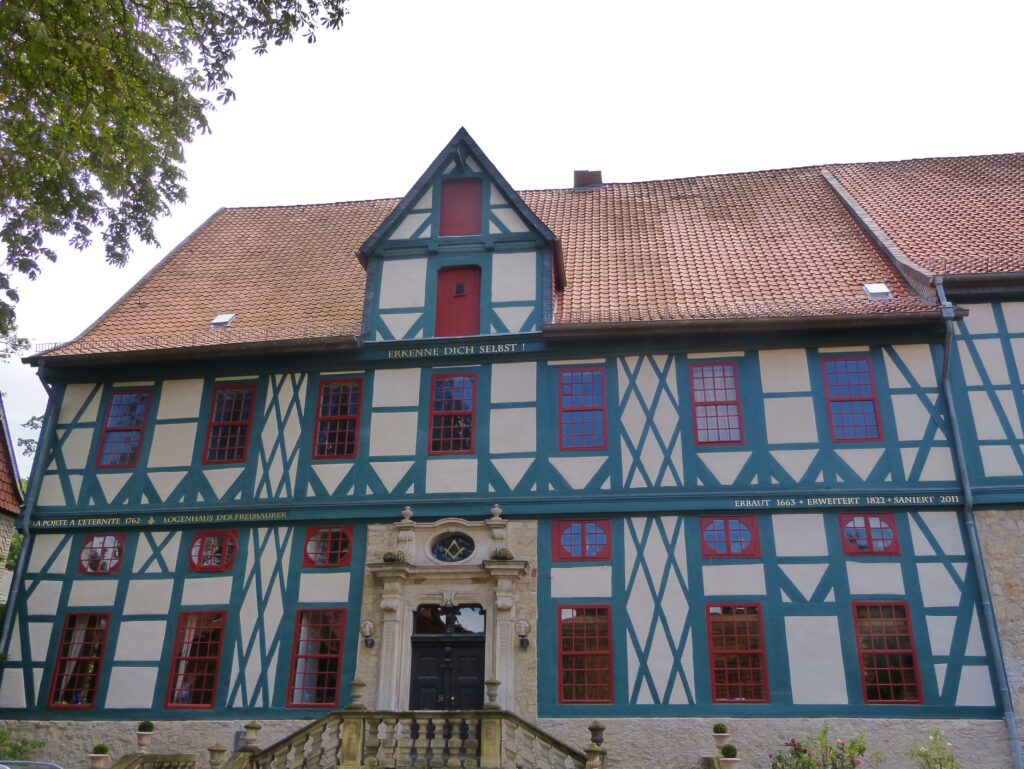
It appears to have been – and maybe still is – a Freemasons Lodge.
After having been rained on for quite a while at this point, we ducked into St. Lambert’s Church to dry off a bit. The church was originally built between 1474 and 1488 and is named, obviously, after St. Lambert, who is the patron saint of Hildesheim. It was destroyed during World War II and later rebuilt.
I thought the church’s organ was beautiful.

It was completed in 1962, believe it or not, but looks much older. That’s because after the previous Baroque organ was destroyed during the war, the new one was constructed using material from other Baroque organs.
This crazy house is known as The Upended Sugarloaf.

Supposedly it looks like an upside-down sugar loaf, which is probably obvious from the name. A sugar loaf is more like a cone shape but I guess it’s close enough. The house is unusual because the ground floor is the narrowest and the higher floors get wider as they go up. It was originally built somewhere between 1500 and 1510 but was destroyed in the war. The reconstruction of the house was made possible through donations, and it was completed in 2010 at a cost of about 1.5 million Euro (just over 2 million dollars at today’s exchange rate).
The sculpture you see here is called the Huckup Monument, completed in 1905.
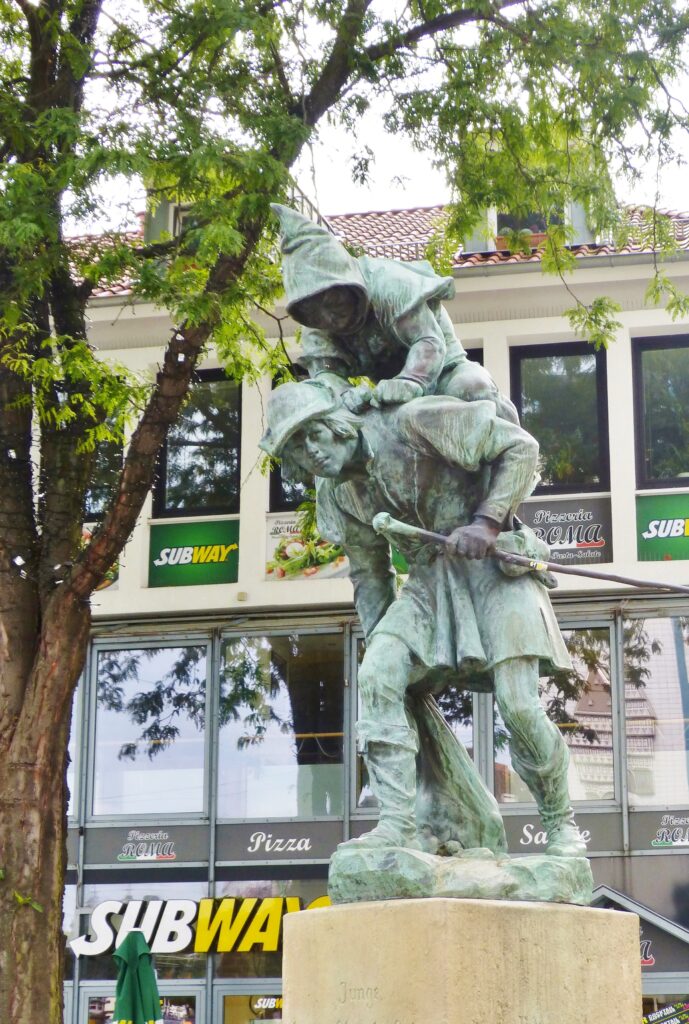
From what I can gather, the Huckup is a apparently a little gnome-like creature that jumps on the backs of thieves to serve as a real-life symbol of a guilty conscience. This sculpture depicts a Huckup on the back of an apple thief. Interestingly, it was donated to the city by a group of lawyers.
From the Huckup Monument we made our way back to the market square. The fountain in the square was adorned with some very odd reliefs that I had fun with in my head.
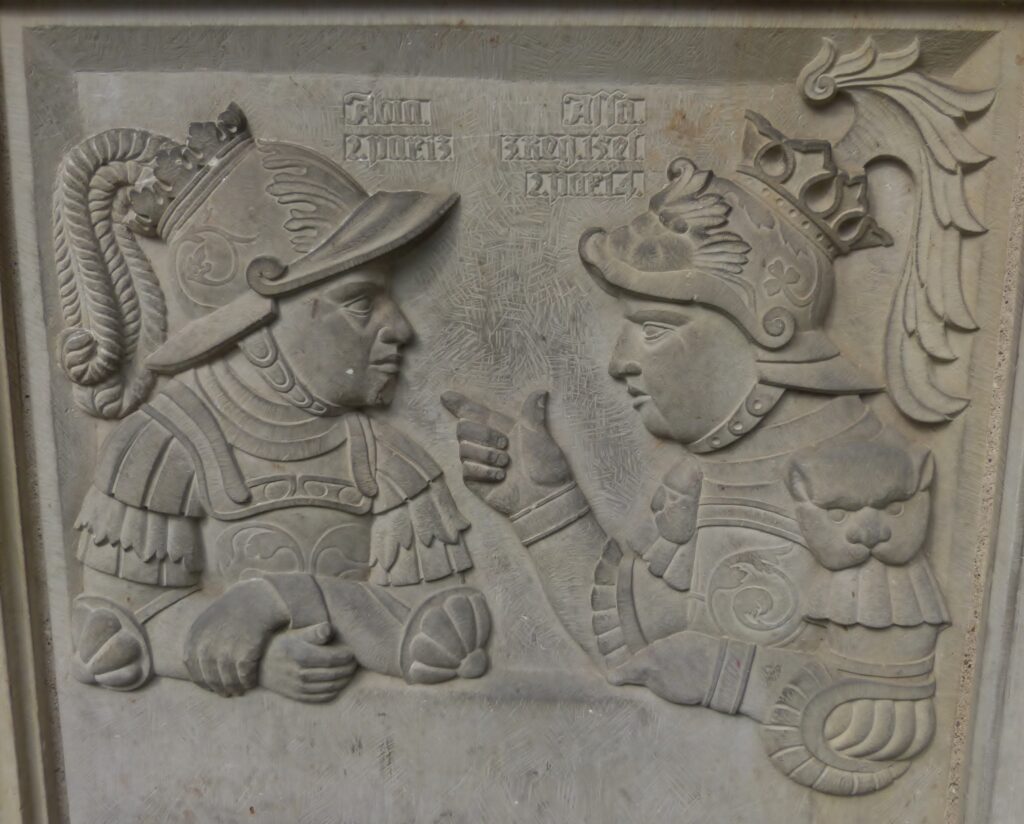
In that one, I imagined the guy on the right saying “Listen. I LIKE having a cat on my sleeve and I don’t want to hear another word about it.”
We ended the night with the Tipple of the Day, Hasseröder beer, in the hotel bar.

The brewery is about an hour away from Hildesheim and is now owned by Anheuser-Busch InBev. It’s actually one of the best-selling beers in Germany but neither of us had ever tried it before. It was pretty decent.
The next morning we checked out of the hotel and before going home, we made a stop that you’ll read about in the next blog post.
I’ll leave you with one last fact about Hildesheim, and that’s the fact that Oskar Schindler died there. You are probably familiar with his name from the movie Schindler’s List that told the story of how he saved over a thousand Jews during World War II.
I’m hoping we find ourselves in the area again once the cathedral reopens so we can visit another beautiful UNESCO site.


